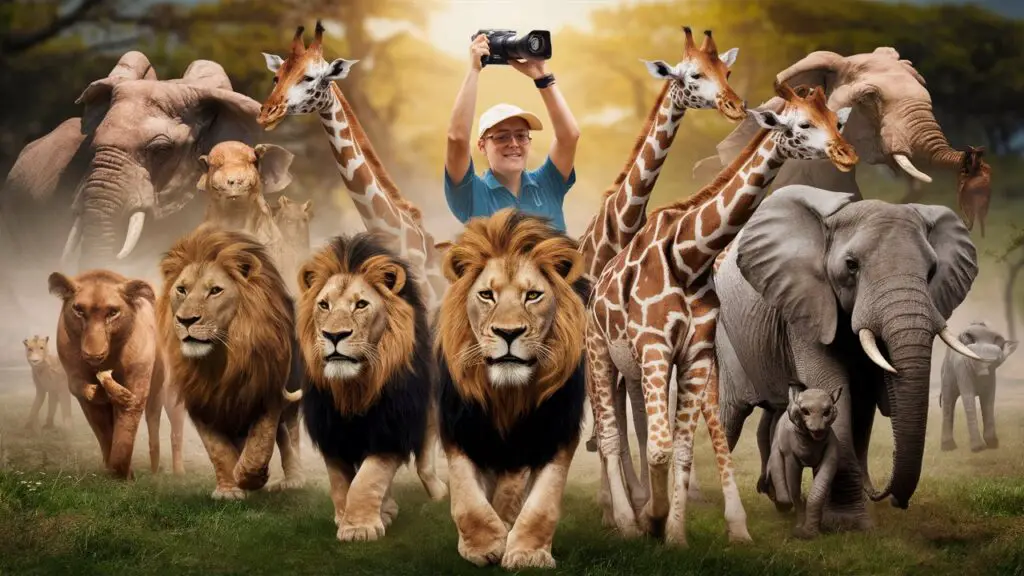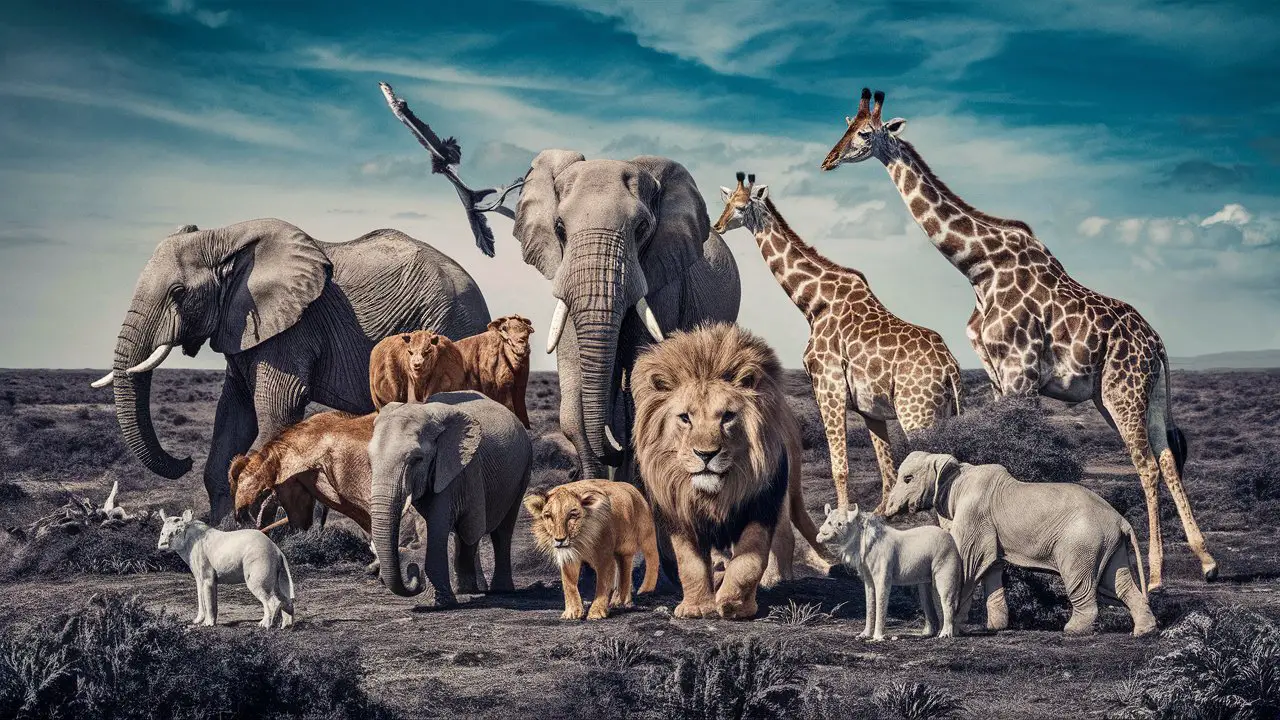As we reach the end of the year, it is time for you to evaluate the progress made in wildlife conservation efforts over the past 12 months. What successes can you identify in preserving endangered species and protecting their natural habitats? Have the initiatives you launched achieved the desired outcomes? What challenges remain and how might you adjust your strategy moving forward? Now is the moment to assess where things stand, recognize accomplishments, and plan for continued progress in the new year. Use this time of reflection to thoughtfully analyze the current state of wildlife conservation and thoughtfully chart the path ahead. With careful evaluation and planning, you can ensure your important work has the greatest possible impact.
Overview of Wildlife Conservation Efforts in 2024
Conservation efforts worldwide have faced significant challenges in 2024. The impacts of climate change, habitat loss, poaching, and other threats have intensified, putting immense pressure on vulnerable species. However, dedicated organizations, governments, and individuals have doubled down on their commitment to protect Earth’s biodiversity.
Major Initiatives and Achievements
Numerous high-profile initiatives marked notable progress this year. The International Union for Conservation of Nature (IUCN) World Conservation Congress brought together leaders and experts, resulting in a groundbreaking commitment to protect 30% of the planet by 2030. Meanwhile, the United Nations Biodiversity Conference (COP15) aimed to establish a global framework for reversing biodiversity loss.
Several conservation victories were celebrated, including successful breeding programs for critically endangered species like the California condor and black-footed ferret. Expansive protected areas were established, such as the Namibian government’s commitment to conserve over 8 million acres for wildlife.
Ongoing Challenges and Efforts
Despite these positive steps, immense challenges persist. The illegal wildlife trade remains a multi-billion dollar industry, fueling the poaching crisis. Many species continue declining at alarming rates, with the IUCN’s Red List of Threatened Species growing longer each year.
To combat these threats, anti-poaching efforts have intensified, utilizing cutting-edge technologies like drone surveillance and animal tracking. Community-based conservation models empower local populations while promoting sustainable practices. Extensive habitat restoration projects aim to rebuild ecosystems ravaged by deforestation and development.
Looking Ahead to 2025
As 2024 draws to a close, the global conservation community remains steadfast in its resolve. While progress has been made, the road ahead is long and arduous. Increased funding, international cooperation, and public awareness will be crucial in the coming year to stem the tide of biodiversity loss. With perseverance and collective action, we can secure a future where our planet’s magnificent wildlife endures for generations to come.
Key Victories for Wildlife Conservation This Year
The past year marked several notable achievements for wildlife conservation efforts worldwide. From strengthening legal protections to successful reintroduction programs, these victories demonstrate the resilience of nature and the impact of dedicated advocacy.
Restoring Keystone Species
Bringing species back from the brink is a monumental task, but 2024 saw triumphant returns. In India, eight Asiatic lions were reintroduced to the Kuno National Park after a 70-year absence, marking a crucial step towards reviving the species’ former range. Meanwhile, the first wild bison calves were spotted in the UK for thousands of years, thanks to an ambitious rewilding project.
Expanding Protected Areas
Safeguarding habitats is vital for conserving biodiversity. The Yellowstone to Yukon Conservation Initiative secured over 3.7 million acres of protected land corridors across Canada and the United States, facilitating animal migration. Similarly, the Democratic Republic of Congo designated 14% of its territory as new national parks and reserves, preserving the world’s second-largest rainforest.
Strengthening Legal Frameworks
Effective legislation plays a pivotal role in conservation. Last year, the European Union instituted a blanket ban on the commercial import of seal products, protecting millions of seals from hunting. Moreover, Chile created the world’s first constitutional rights for nature, granting ecosystems legal personhood and environmental protections.
While much work remains, these key victories highlight the tangible progress achieved through global cooperation and dedicated grassroots efforts. As we forge ahead, such milestones serve as beacons of hope for a future where our planet’s magnificent wildlife can thrive.
Ongoing Challenges Facing Wildlife Conservation
Despite significant efforts and progress, wildlife conservation continues to face numerous obstacles worldwide. As we evaluate this year’s initiatives, it’s crucial to address the persistent challenges hindering effective preservation strategies.
Habitat Loss and Fragmentation
One of the most pressing issues is the relentless destruction and fragmentation of natural habitats. Deforestation, urbanization, and unsustainable land-use practices contribute to the loss of vital ecosystems, leaving many species with dwindling territories and resources. Protecting and restoring these habitats remains a top priority to ensure the survival of diverse wildlife populations.
Illegal Wildlife Trade
The illegal wildlife trade continues to pose a severe threat to numerous species, particularly those prized for their parts or captured for the pet trade. Despite international efforts to combat this illicit industry, poaching and trafficking activities persist, driven by high demand and lucrative profits. Strengthening law enforcement, raising awareness, and reducing consumer demand are crucial steps in curbing this detrimental practice.
Climate Change Impacts
The effects of climate change, including rising temperatures, shifting weather patterns, and extreme weather events, are increasingly affecting wildlife populations. Many species struggle to adapt to these rapid environmental changes, leading to disruptions in their breeding cycles, food sources, and migration patterns. Mitigating climate change through global cooperation and implementing climate-resilient conservation strategies is essential for safeguarding vulnerable species.
Insufficient Funding and Resources
Conservation efforts often face significant resource constraints, with limited funding and personnel available to address the multitude of challenges. Inadequate financial support hinders research, monitoring, and enforcement activities, ultimately hindering the effectiveness of conservation initiatives. Increased investment from governments, private organizations, and individuals is vital to sustain and expand these crucial endeavors.
Human-Wildlife Conflicts
As human populations expand and encroach upon natural habitats, conflicts between humans and wildlife become more frequent. These conflicts can result in retaliatory actions, such as hunting or habitat destruction, further endangering vulnerable species. Developing collaborative strategies that balance human needs with wildlife conservation is crucial for promoting coexistence and minimizing conflicts.
Addressing these ongoing challenges requires a multifaceted approach, involving international cooperation, policy reforms, community engagement, and innovative solutions. By confronting these obstacles head-on, we can pave the way for more effective and sustainable wildlife conservation efforts, ensuring the preservation of our planet’s rich biodiversity for generations to come.

Innovative New Approaches to Protecting Wildlife
Emerging Technologies
From drones to artificial intelligence (AI), innovative technologies are revolutionizing wildlife conservation efforts worldwide. Unmanned aerial vehicles equipped with thermal cameras can now detect poachers in hard-to-reach areas. AI algorithms analyze vast datasets to predict potential hotspots for illegal hunting or trafficking activities. These cutting-edge tools empower rangers and law enforcement to stay one step ahead.
Community Engagement
Increasingly, conservationists recognize that sustainable solutions require collaboration with local communities. Education programs raise awareness while fostering a sense of ownership and pride. Eco-tourism initiatives provide alternative livelihoods, reducing reliance on poaching or habitat destruction. By addressing socioeconomic drivers, these inclusive approaches nurture long-term behavioural changes.
Cross-Border Cooperation
Many species migrate across international boundaries, necessitating coordinated global action. Transnational anti-poaching units streamline intelligence sharing and joint operations. Regional agreements standardize laws and penalties related to wildlife crimes. Public-private partnerships mobilize resources and expertise. This cooperative spirit transcends borders in defence of our planet’s biodiversity.
Advanced Forensics
Innovative forensic techniques aid investigations into wildlife trafficking networks. Stable isotope analysis pinpoints geographic origins of seized contraband. DNA profiling connects confiscated products to specific poaching incidents. Such scientific breakthroughs generate vital evidence to dismantle criminal syndicates systematically.
With ingenuity and collaboration, conservationists worldwide pioneer novel strategies to combat existential threats facing numerous species. These pioneering approaches underscore humanity’s evolving commitment to preserving Earth’s natural heritage for generations to come.
How You Can Support Wildlife Conservation Efforts
Wildlife conservation is a collective responsibility. While governments and organizations play a crucial role, individual efforts are equally vital in protecting our planet’s biodiversity. Here’s how you can contribute to this noble cause.
Educate Yourself
Knowledge fuels action. Deepen your understanding of local and global conservation challenges by reading authoritative sources, attending seminars, and engaging with experts in the field. An informed perspective will enable you to make more impactful choices.
Reduce Your Ecological Footprint
Adopt an eco-friendly lifestyle. Minimize waste, conserve energy, reduce water consumption, and choose sustainable products. These small steps collectively make a significant difference in preserving natural habitats.
Support Conservation Organizations
Contributing to reputable conservation organizations is a powerful way to support their efforts. Donations, volunteering, or participating in their campaigns can amplify their reach and impact. Research organizations aligned with your values and goals.
Be a Responsible Traveler
When exploring natural areas, follow designated trails, respect wildlife, and minimize disturbances. Choose eco-tourism operators committed to sustainable practices. Your responsible choices as a traveler can protect vulnerable ecosystems.
Inspire Others
Share your passion for conservation with your family, friends, and community. Inspire others to become advocates for wildlife protection through social media, educational events, or leading by example. Every individual inspired multiplies the impact.
Support Sustainable Policies
Stay informed about local and national policies impacting wildlife conservation. Engage with policymakers, vote for leaders championing environmental causes, and support legislation that safeguards natural habitats and species.
By embracing these actions, you can play a vital role in preserving the delicate balance of our planet’s ecosystems and ensuring the survival of countless species for generations to come.
Conclusion
You have evaluated the progress of key wildlife conservation efforts this year. While significant strides were made in some areas, much work remains. It is up to all of us – governments, organizations, communities, and individuals – to build on the momentum and redouble our commitment to protecting endangered species and habitats worldwide. Though daunting, the task is not insurmountable if we work together. The coming year provides an opportunity to learn from our successes as well as our setbacks. With sustained effort and a spirit of cooperation, we can achieve our conservation goals and preserve our planet’s precious biodiversity for generations to come.





